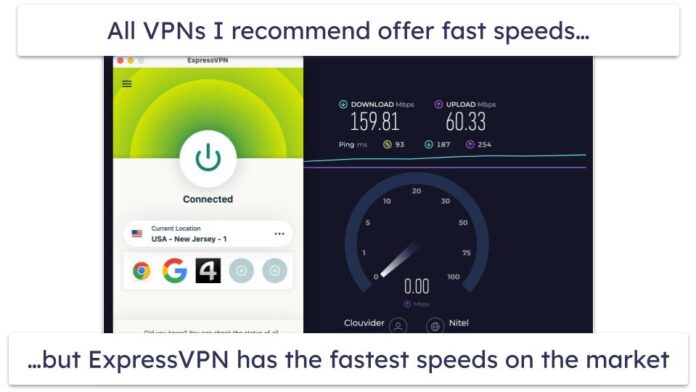In this article, we will focus on installing CentOS 8 | CentOS 7 on Hetzner Root Servers. Hetzner is a cloud hosting company providing auctions for physical server hardware for very competitive prices with a per/month billing model.
We will be doing this installation on a Hetzner root server with the following specs.
CPU: Intel(R) Core(TM) i7-8700 CPU @ 3.20GHz (12 cores) Memory: 64GB RAM Disk: 2 x 1024GB NVMe SSDs Network: 1Gbit IPV4 Adresses: 1 x IPV4 public address
Note that with Hetzner Root servers, you get a single IPv4 public IP address but you can request for additional IP or subnet for use.
Step 1: Boot to Rescue Mode
Login to your Hetzner console for Root servers and navigate to Servers section under Main functions.
Main functions > Servers > Server Label > Rescue

Select the Operating system to use in rescue mode, CPU Architecture, and public key and click on “Activate rescue system“.

Reboot the server under “Reset” server section.
Step 2: Create Root Server Configuration.
SSH to the server in rescue mode using root user and password shown during Rescue activation.
$ ssh root@serverip
Welcome to the Hetzner Rescue System.
This Rescue System is based on Debian 9 (stretch) with a newer
kernel. You can install software as in a normal system.
To install a new operating system from one of our prebuilt
images, run 'installimage' and follow the instructions.
More information at http://wiki.hetzner.de
Rescue System up since 2019-07-04 23:34 +02:00
Last login: Sat Jul 6 09:03:05 2019 from 41.90.217.125
Hardware data:
CPU1: Intel(R) Core(TM) i7-8700 CPU @ 3.20GHz (Cores 12)
Memory: 64339 MB
Disk /dev/nvme0n1: 1024 GB (=> 953 GiB)
Disk /dev/nvme1n1: 1024 GB (=> 953 GiB)
Total capacity 1907 GiB with 2 Disks
Network data:
eth0 LINK: yes
MAC: b4:2e:99:47:fa:5c
IP: xxxxxxxxxxxxxxxxxx
IPv6: xxxxxxxxxxxxxxxxxx
Intel(R) PRO/1000 Network Driver
root@rescue ~ #
My root server has two disks @512GB. I’ll configure them in non-redundant RAID 1 (stripping) configuration. Let’s create a Hetzner server configuration to be used by installimage for a new operating system from one of our prebuilt images.
$ vim install-config.txt
DRIVE1 /dev/nvme0n1
DRIVE2 /dev/nvme1n1
SWRAID 1
SWRAIDLEVEL 0 # Use 1 for Raid 1
BOOTLOADER grub
HOSTNAME myrootserver.geeksforgeeks.org
PART /boot ext3 512M
PART lvm vg0 200G
#PART lvm vg0 all
LV vg0 root / xfs 50G
LV vg0 swap swap swap 16G
LV vg0 var /var xfs 100G
LV vg0 tmp /tmp xfs 30G
IMAGE /root/images/CentOS-79-64-minimal.tar.gz # CentOS-80-stream-amd64-base.tar.gz for CentOS 8 Stream
Once the configuration is done, install image and create partitions.
# installimage -a -c install-config.txtThe installation should start.

Installation process.
Hetzner Online GmbH - installimage
Your server will be installed now, this will take some minutes
You can abort at any time with CTRL+C ...
: Reading configuration done
: Loading image file variables done
: Loading centos specific functions done
1/17 : Deleting partitions done
2/17 : Test partition size done
3/17 : Creating partitions and /etc/fstab done
4/17 : Creating software RAID level 0 done
5/17 : Creating LVM volumes done
6/17 : Formatting partitions
: formatting /dev/md/0 with ext3 done
: formatting /dev/vg0/root with xfs done
: formatting /dev/vg0/swap with swap done
: formatting /dev/vg0/var with xfs done
: formatting /dev/vg0/tmp with xfs done
7/17 : Mounting partitions done
8/17 : Sync time via ntp done
: Importing public key for image validation done
9/17 : Validating image before starting extraction done
10/17 : Extracting image (local) done
11/17 : Setting up network config done
12/17 : Executing additional commands
: Setting hostname done
: Generating new SSH keys done
: Generating mdadm config done
: Generating ramdisk done
: Generating ntp config done
13/17 : Setting up miscellaneous files done
14/17 : Configuring authentication
: Fetching SSH keys done
: Disabling root password done
: Disabling SSH root login without password done
: Copying SSH keys done
15/17 : Installing bootloader grub done
16/17 : Running some centos specific functions done
17/17 : Clearing log files done
INSTALLATION COMPLETE
You can now reboot and log in to your new system with
the same password as you logged in to the rescue system.
Once the installation is complete, reboot the server.
# shutdown -r nowLogin and confirm server installation.
[root@myrootserver ~]# cat /etc/os-release
NAME="CentOS Linux"
VERSION="7 (Core)"
ID="centos"
ID_LIKE="rhel fedora"
VERSION_ID="7"
PRETTY_NAME="CentOS Linux 7 (Core)"
ANSI_COLOR="0;31"
CPE_NAME="cpe:/o:centos:centos:7"
HOME_URL="https://www.centos.org/"
BUG_REPORT_URL="https://bugs.centos.org/"
CENTOS_MANTISBT_PROJECT="CentOS-7"
CENTOS_MANTISBT_PROJECT_VERSION="7"
REDHAT_SUPPORT_PRODUCT="centos"
REDHAT_SUPPORT_PRODUCT_VERSION="7"
Update CentOS and install basic packages.
sudo yum -y update
sudo yum -y install vim wget curl bash-completion epel-release telnetYou now have a successful installation of CentOS 7 on Hetzner root server. Stay connected for more articles.

